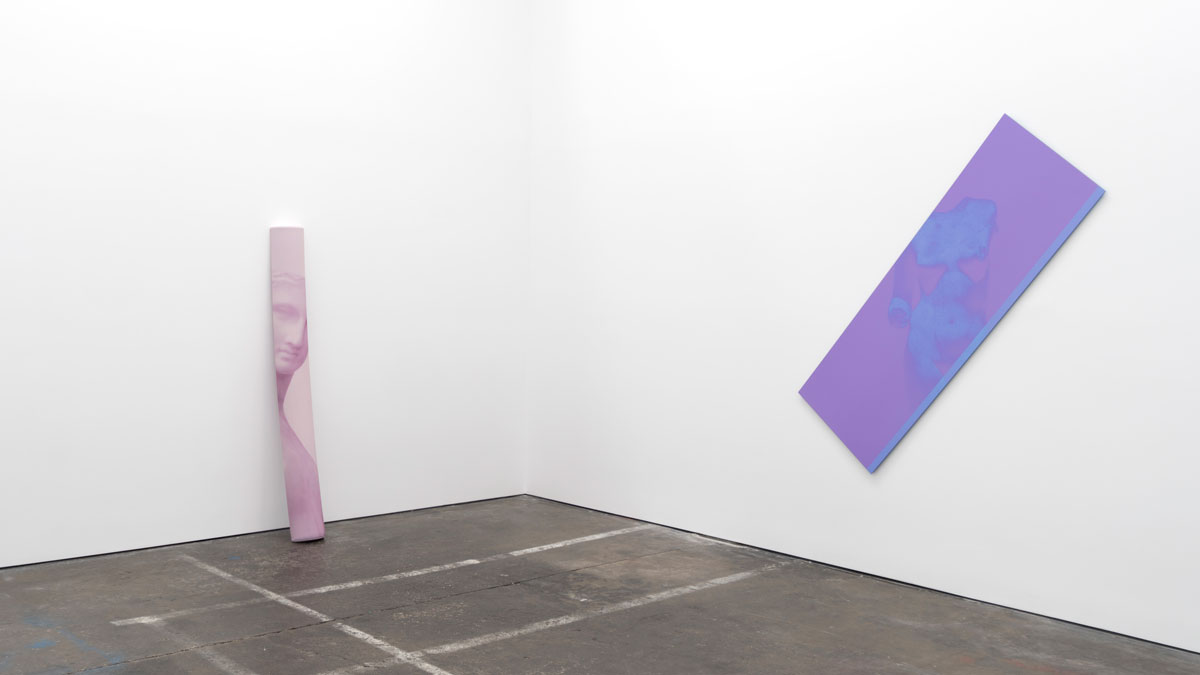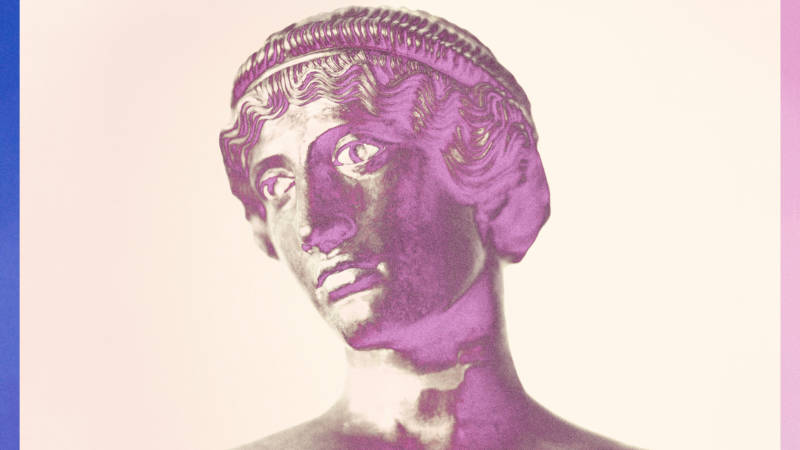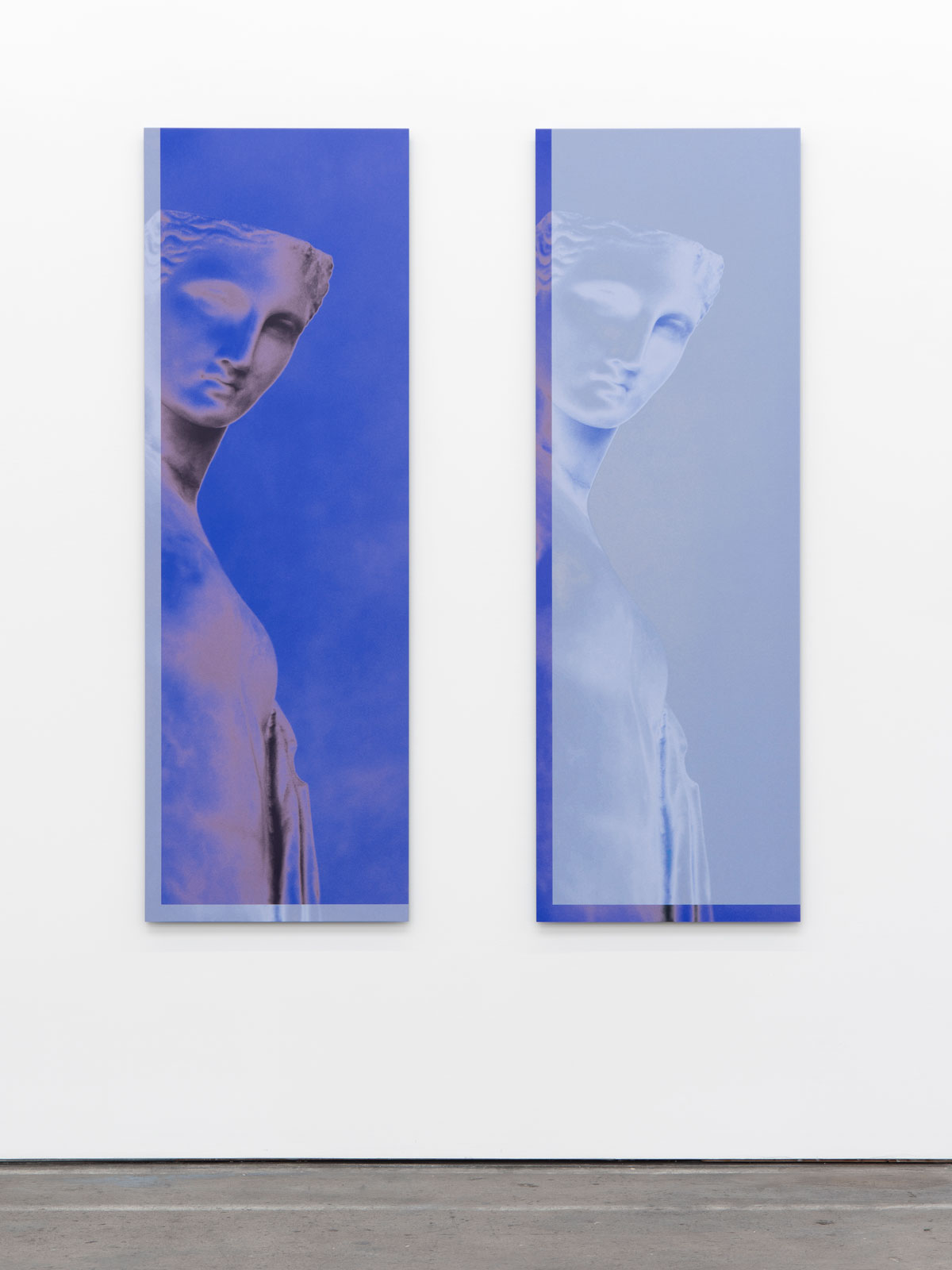Color has long been contentious—even Plato and Aristotle disagreed as to whether it helped or hindered the aim of art, which was always the imitation of nature. Color was decorative, even false, but gave painting and sculpture life, and truth. The Greeks used the word pharmakon for paint and artificial color; it also meant drug (both poison and cure), remedy, medicine, charm and spell. Color has often been associated with the marginal, the threatening—that which is not in charge—so also: the foreign, the feminine. Its definitions have included “to hide,” “to conceal,” “a pretense”; it still means to embellish, at the very least to influence.
Artist Sara VanDerBeek knows that ancient Greek and Roman marble statues were originally many-colored, vibrantly painted, and that, when antique statuary was rediscovered during the Renaissance, the brilliance had largely worn away. Figures were prized above all for their (colorless) forms. Better yet, she knows that the contemporary impact of such a revelation has less to do with the reapplication of color to the statues—as some art historians are now undertaking via plaster models or projection—than with revealing the decidedly fragmentary nature of the past and its hold on us.
In Roman Women, on view at San Francisco’s Altman Siegel gallery through Aug. 30, VanDerBeek’s saturated, synthetically colored photographic prints of Roman statues both acknowledge and render foolish our heavily conditioned assumptions about the place and virtue of unadorned white marble—and by extension the chauvinist ideals of Western empire.
Her vivid, all-over color images are further manipulated: cropped, duplicated, printed on flat metal plates and wrapped around three-dimensional objects. As such, they accentuate how simultaneously incomplete and pervasive our own understanding of the past can be, and challenge the legacies tied to art and to bodies, particularly women’s, inherited images so often carry.

In Roman Woman XI, at the gallery’s entrance, a bright and piercing lapis offsets a crouching, life-size woman entirely cast in deep and ethereal violet. She’s missing a portion of her head and both arms; she casts a shadow on her own thighs and gentle belly rolls. A thin purple strip along the left edge of the print hints at the meticulous coloring process.




